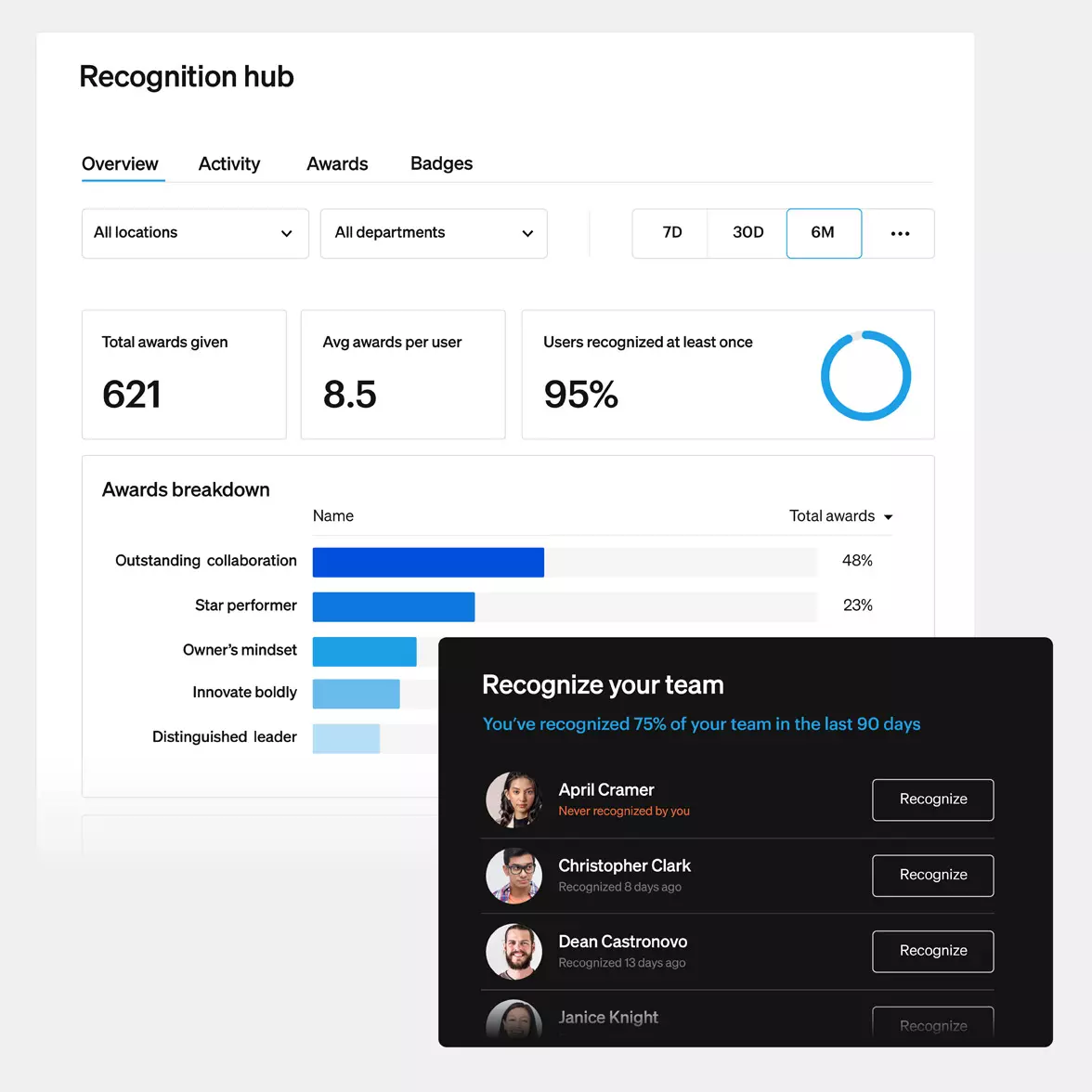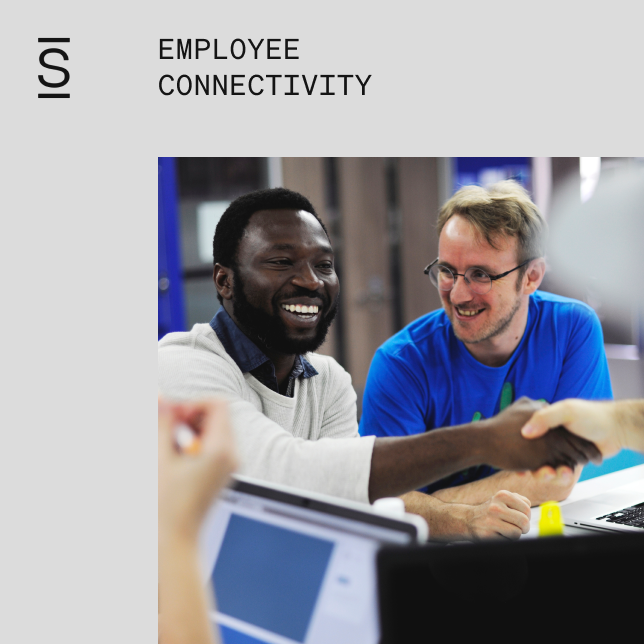Employee connectivity explained
Employee connectivity refers to employees’ connections with each other and with their organization. This can also include the tools and methods used by organizations to promote greater connectivity between employees not just on a professional level, but also on a personal level.
Overview
A 2022 Gallup study showed that only about 23% of the world’s workers are fully engaged at work. The effects of this are wide-ranging. Low employee engagement results in lower productivity, which in turn results in slower economic growth.
This speaks to a far larger problem. It is not enough to create communications systems that make it easy for employees to communicate with each other and with their managers. While this is important to ensure that a company runs smoothly, employees who do not feel a sense of belonging and connection with each other will begin to feel disconnected from their colleagues, resulting in low engagement and lower productivity. Ultimately, this is where employee connectivity comes in.
Employee connectivity does not only include providing the necessary tools and platforms for communication (though it is an important part of it). It also includes creating a broader sense of belongingness and unity among employees. This connectivity is not just about fostering physical connectivity (such as providing high-speed internet or the latest communication tools), but also involves fostering emotional connectivity. Higher employee engagement with one another leads to increased productivity, better collaboration, improved employee satisfaction, and ultimately, a healthier bottom line for the company.
Employee connectivity has gained significance not just in terms of logistical coordination, but also in terms of organizational culture. It has become a critical component of a positive, inclusive, and transparent work culture. Despite its significance, employee connectivity is often overlooked or not optimized to its full potential in many organizations. This guide is a deep dive into understanding employee connectivity and the benefits it offers to both employees and organizations, and how you can help promote it within your workforce.
Importance of Employee Connectivity
The way your company treats its employees can have either a positive impact or a negative one. Employees who feel that they are part of a positive culture that fosters connection and a sense of belonging are more likely to be engaged with one another and with their jobs. This results in higher levels of productivity. But what is the flip-side of this? Employees who don’t feel connected to their company and to each other are much less likely to be engaged, and as a result, productivity will suffer.
Rewards and employee recognition programs can improve employee engagement. When employees feel appreciated for their work, they will collaborate better, solve problems faster, and work towards common organizational goals more efficiently. To see how a smart intranet solution can help you build a unique employee recognition program and drive engagement across multiple, diverse teams, request a demo today.

Employee connectivity also helps increase the general ease of knowledge sharing. In all organizations, the free flow of knowledge and ideas enhances innovation and progress. However, when your internal knowledge base or intranet becomes a dumping ground for old and outdated information, employees will waste time searching for information, rather than connecting with one another and innovating. With federated search and auto-governance, Simpplr ensures content remains fresh and is easy to find.
The Role of Technology & Leaders in Employee Connectivity
Technology’s importance in enhancing employee connectivity has grown in today’s world as remote work and digital workplaces have become the norm. Advanced communication tools and platforms can bridge the gap between employees, irrespective of their geographic location. There are a number of communication tools currently on the market such as Simpplr’s Intranet, Slack’s messaging app, and Zoom for video calls, that facilitate real-time communication, collaboration, and knowledge sharing, increasing the overall efficiency of the organization.
Besides enabling real-time communication, some connectivity tools also help leaders track and measure employee connectivity. Finding ways to gauge response and the ROI of internal communications is critical. When changes are made to an organization that enable greater virtual connectivity, leadership must take steps to measure employee connectivity to make sure that these changes are being received well by employees. Powered by AI, Simpplr enables leaders in your organization to track employee sentiment and satisfaction in real time through surveys and sentiment checks. By utilizing employee listening to gauge sentiment and satisfaction in real time, leaders can stay informed about how their employees are feeling about their jobs while identifying potential areas of improvement in their communication strategies. By staying dialed in about employee satisfaction and improving overall responsiveness, leaders can develop more personal and improved professional connections with their employees, strengthening overall employee connectivity.

Building a Connected Workforce: Strategies and Practices
Cultivating a connected workforce requires strategic planning and consistent effort. It requires the implementation of both technological solutions and cultural practices that foster open and effective communication. Here are some strategies that can help businesses build a highly connected workforce.
- Engage your employees. US organizations lose over $450 billion annually due to disengaged employees, but how do you implement a good employee engagement program? Learn about over 50 employee engagement ideas that you can implement in your workplace.
- Listen to your employees. You won’t know how your employees are feeling, unless you ask and conducting an employee experience survey is as important as how you conduct an EX survey. However, one annual survey regarding how employees are doing is not enough. By the time the data is analyzed, the concerns that your employees have raised might have been brewing for months and the employees may have already left. With Simpplr, you can get real-time, continuous AI insights to transform your employee experience.
- Celebrate your employees. It is crucial to create an open and inclusive culture where every employee feels valued and heard. This can be achieved by encouraging dialogues, providing regular feedback, and promoting transparency. You can also encourage employee connectivity with personalized, peer-to-peer recognition that publicly celebrates employee efforts, achievements, and milestones.
Training for Effective Communication
For many connectivity tools, employees will have to be trained on them so they can become more comfortable when using them. A number of connectivity tools can be somewhat complicated, and training sessions will be needed so employees can learn how to utilize these tools effectively.
However, the days of training manuals are long gone. Employees expect the tools they utilize to be simple and intuitive. One of the top ten reasons why intranets fail is because traditional intranets are difficult to learn and utilize. Thus, Simpplr was built to be straightforward and easy to use, with the end user in mind. There’s no training needed for employees and no IT management required; Simpplr is out-of-the-box and managed with clicks, not code. Learn more about Simpplr’s intranet and how it can help connect your employees.

Watch a 5-minute demo
See how the Simpplr employee experience platform connects, engages and empowers your workforce.
- #1 Leader in the Gartner Magic Quadrant™
- 90%+ Employee adoption rate







